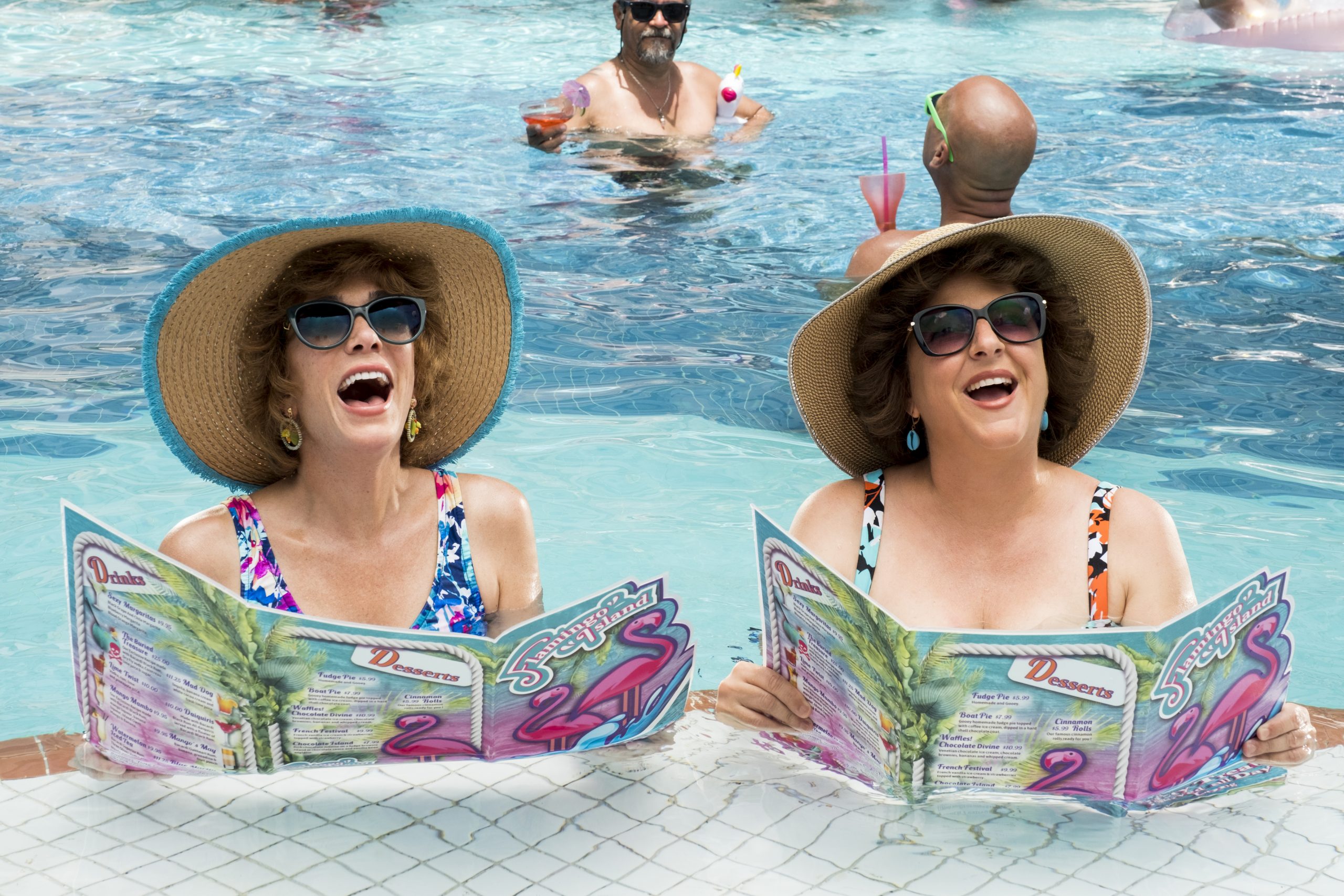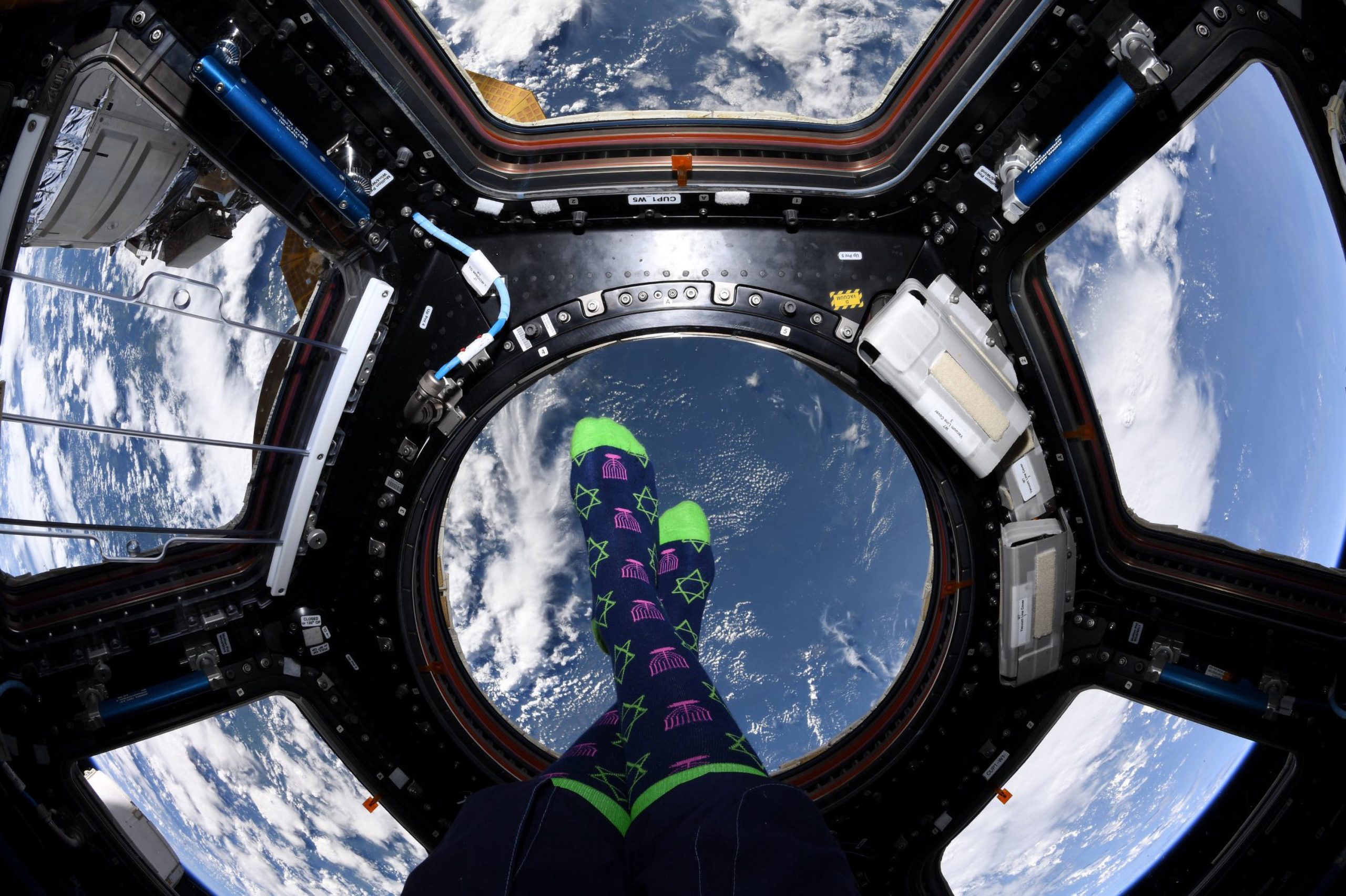
Australian cinematographer Toby Oliver spoke over the phone with Solzy at the Movies about Barb and Star Go to Vista Del Mar.
You’re known for a lot of horror films. What was it about Barb and Star Go to Vista Del Mar that drew you to sign on for the project?
Toby Oliver: I was actually looking to do something sort of other—something a little bit different to the horrors and the thriller films that I’ve been doing quite a few years. I actually was talking to my agents and stuff about finding something that was a bit different. This movie came along. I read the script and it was fantastic. It was kind of exactly the kind of sort of wacky, unusual, and kind of quite silly premise and the script was so fun. The thing that actually got me excited about it was the fact that it wasn’t horror, really.
How do working with Kristen Wiig and Annie Mumolo compare to Jordan Peele?
Toby Oliver: Pretty different people, pretty different sensibility. Of course, Kristen and Annie are great writers and they were just a pleasure to work with in the sense that they were there like Jordan Peele, writers on and then they were on set. They weren’t directing because we had Josh Greenbaum, directing. They had pretty close hands on everything that was going on. I’d say they’re pretty much—you could call definitely call them the creators of the project. They worked very closely with Josh and it was sort of like the three of them were kind of basically (inaudible) out all a story beats and deciding what was funny and what wasn’t so funny as we were shooting. It was a really fun working with those two—they were such a pleasure. They were so on the ball with their performance part of it. They had written the screenplay. I guess they knew the material so well and knew exactly all the beats they wanted to get to that it was rare that you did extra takes because they didn’t hit the right performance. What we did to do extra takes for was—they were able to do lots of improvisation and various takes on the same scene, different dialogue, and things like that.
In terms of lighting, what films did you look to for inspiration?
Toby Oliver: Josh had a few ideas and I brought some ideas to the table. We looked at a fair bit of Wes Anderson’s work for that sort of quite kooky left of center, sort of comic approach to try and apply a bit of that with the way that it looked. Also, a bit of Tim Burton’s sort of more comic work was on the table as references for how we wanted to look. We wanted to have a rich and very colorful, very poppy kind of feel. That was in conjunction with our production designer, Steve Sackler, who did a magnificent job bringing all the designs together. I was really working very closely in conjunction with him with the color palette, the pinks, the blues. I did some tweaks in the camera with a lot to bring out the tropical blue of the water and make those particular colors pop a little bit more and still leave the faces and the skin tones pretty normal. We did we did a bunch of things to create the look that you see.
I feel that Vista Del Mar was bright and colorful when compared to the scenes set in Nebraska.
Toby Oliver: Yeah, exactly. We did that deliberately. That was something that we figured out in the beginning. It wasn’t sort of an add-on that we did later on in post. We actually did some Nebraska scenes with designs to be very beige and sort of almost very ordinary or banal really. The idea was that their Midwestern town was the most ordinary, boring town that you could ever come across. It was like, let’s try that in the color palette as well and then we switch to the more really vibrant stuff when they finally get to Vista Del Mar.
Can you talk about shooting the musical sequence upon the entrance to the hotel?
Toby Oliver: That was one of our biggest sequences in the movie certainly in terms of the dancers and the action. Our choreographers had a ton of rehearsal for that. That was quite a big set piece for us. We shot it at the main hotel that we shot most of the location work, which was the Marriott in Cancun, Mexico. It was a big sort of giant atrium that had quite a lot of natural light coming in as well. It was really a case of rather than—I didn’t try to find all the natural light so I let the sort of the sun and the ambience come in. And then really, it was a case of trying to maintain that for the long shooting day because we’re shooting this big elaborate sequence. The natural light changes through the day so it was a case of sort of working with that because it was such a big room. We didn’t have the wherewithal probably to make it all black and then light the whole thing from the beginning. It was supposed to be happening during the day. It was a case of the lighting work in conjunction with the natural light. We had a big techno crane on that day that we brought in for that scene so we can get the big overhead shots of the dancers and across the map of Florida that was put onto the floor. There was quite a lot of moving parts and we had an extra camera that day so we had three cameras. It was a lot of fun. It’ll all kind of worked. It was pretty very carefully storyboarded, rehearsed, and talked at length beforehand so it all came together pretty well.
Were there any other challenging scenes or sequences that you found challenging?
Toby Oliver: Oh, yeah. The most challenging sequence, interestingly, was probably when we were out on the water. Towards the end of the movie, when Barb and Star are trying to boil the evil villainous plan, they have to shoot out into the ocean on a jet ski and come to grips with her and the submarine out there trying to stop the disaster falling upon the town. Working out on the water even though we didn’t have a ton of actors or anything out there—just doing those scenes where they’re on a floating jet ski and are supposed to be out in the middle of the ocean. There’s sort of a fight scene in the water and they’re throwing the thing around. There’s a couple of stunts there when the villain falls on top of the jet ski. Doing that stuff—even though we’re only dealing with the three actors out there—was actually really quite tricky and required a few different methods of doing water work. We’re working off a pier at one point—we’re actually out in the middle of the ocean of Cancun, filming the two girls on the jet ski doing their own sort of stunts. We had cameras mounted to the jet ski. We had some technical issues and certainly, when you’re out there on the water, everything takes something like three times as long to shoot maybe even more. That was always going to be a challenge. It was. However, we managed to pull it off and I think it works in the movie.
How did you decide on the type of camera and lenses for the film?
Toby Oliver: We used the Sony Venice camera. It was the first time I’d used the Sony because it had been updated to a point where it was really going to be quite usable. I think it’s become quite a popular camera for movies and TV around the world. I tested that camera and decided to go with it for this film. The lenses—from the beginning Josh, maybe because he was coming from a more of a TV background, really wanted to use anamorphic lenses which he hadn’t used before. It gives you the widescreen anamorphic look, which we thought would be a good fit for the beaches in Vista Del Mar, the expansive the crowd shots, and all the elements in Barb and Star that would lend itself to that. We tested a few different kinds of anamorphic lenses and we ended up with the Cooke anamorphic because we could get a big full set of those and they look really good. Some anamorphic lenses are can give you a bit of a distorted image like they have inherent distortion and the Cooke’s not as much. That fit well with what Josh wanted for the movie. That’s how we ended up with the look and I think it worked really well.
You worked on Seriously Red in late 2020. Can you speak to the challenges of shooting a film during a pandemic?
Toby Oliver: The thing with Seriously Red is that that was shot here in Australia. In Australia, there’s been a few outbreaks and a bit of quite heavy Covid-19 restrictions that were brought upon by the government here. By the time I was shooting Seriously Red, there were two reasons why it was easier. Firstly, that the Covid-19 outbreaks had largely been controlled and incidents of the Covid-19 pandemic had all but disappeared in Australia. Also, we weren’t shooting in Sydney or in the main cities. We were shooting up the coast in an area near Byron Bay. A beautiful part of Australia but also a regional area where the incidents of the pandemic were even less. In fact, we actually ended up shooting on set without even masks because it was no longer mandated or necessary by the time we were sort of at the end of the shoot.
I have to say that actually was a really easy experience. I’m about to head back to the United States shortly to start another project in Atlanta. That will be with the stringent Covid-19 procedures and requirements will be applied to that. It makes things difficult and makes things a little bit slower but it’s necessary. It’s important to keep the set as safe as possible. In fact, none of these—especially in the United States and many other countries, it’s the only way we can keep filming, which we all want to keep doing, is to follow these protocols very, very, very strictly and very thoroughly.







